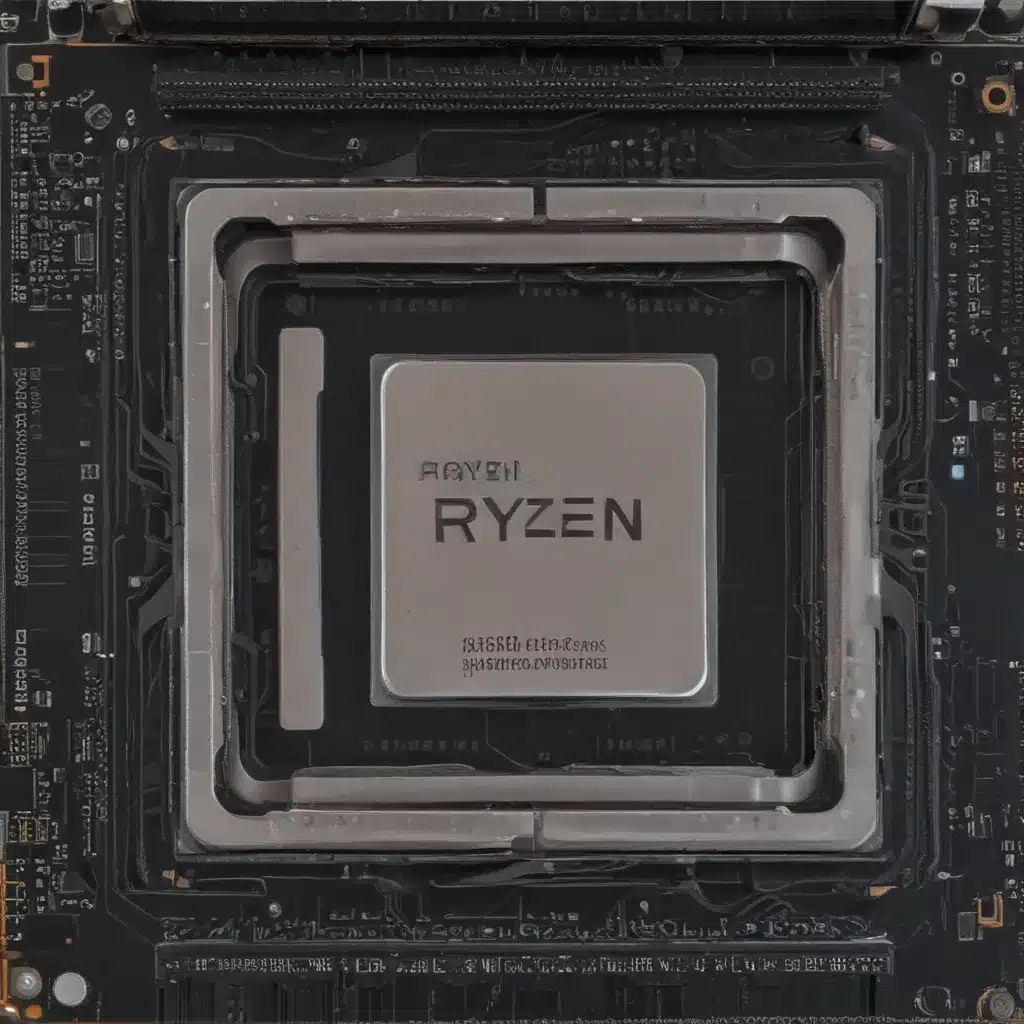Unlocking the Power of Zen 4: A Deeper Look
As a UK-based computer repair technician, I’ve had the privilege of working on a wide variety of systems over the years. But when AMD’s latest Ryzen 7000 series processors hit the market, I found myself giddy with excitement. You see, I’m a bit of a hardware nerd at heart, and the prospect of diving deep into the Zen 4 architecture had me positively buzzing.
Efficiency First, Performance Second
Let’s start with one of the key pillars of Zen 4: power efficiency. [1] AMD has really outdone themselves here, taking full advantage of TSMC’s state-of-the-art 5nm process node. Compared to the previous Ryzen 5000 series, we’re seeing a staggering 75% increase in performance at the same 88-watt power envelope. That’s the kind of efficiency boost that makes a computer repair technician’s heart skip a beat.
But AMD didn’t stop there. They’ve also introduced a slew of platform-level power improvements, including those fancy new variable power rails and the SVI3 VRM monitoring system. [1] It’s like AMD has taken a proverbial scalpel to the power delivery system, trimming the fat and optimizing every last watt.
Frequency Fever – Zen 4 Hits New Highs
Of course, efficiency is only half the equation. The other half is raw, unbridled performance. And in that department, Zen 4 delivers in spades. [1] We’re talking top turbo frequencies of up to 5.7GHz on the Ryzen 9 7950X, a 16% increase over the previous generation. Even the entry-level Ryzen 5 7600X is clocking in at a blistering 5.3GHz.
Now, I know what you’re thinking – “But wait, didn’t AMD say they were hoping for 6GHz?” Well, yeah, they did. [1] Apparently, their engineering team was aiming for the stars, but had to “settle” for a measly 5.7GHz. Oh, the humanity!
IPC Improvements – Chipping Away at the Competition
But raw clock speeds are only part of the story. AMD has also managed to squeeze out an impressive 13% average IPC (instructions per clock) improvement with Zen 4. [1] That’s not quite as earth-shattering as the 15% jump we saw with Zen 2, but it’s still a solid step forward.
The secret sauce? A well-rounded approach that touches on everything from the front-end to load/store improvements and branch prediction. [1] It’s like AMD has been taking notes from a master chef, carefully balancing the flavors to create a truly delectable CPU dish.
The Spice of Life: AVX-512 and Security Enhancements
Of course, no deep dive into Zen 4 would be complete without a look at the new features and capabilities. Chief among them is the introduction of AVX-512 support. [1] Now, I know what you’re thinking – “AVX-512? Isn’t that Intel’s thing?” Well, not anymore, my friends.
AMD has managed to implement AVX-512 in a rather clever way, using their existing 256-bit SIMD to execute the wider 512-bit instructions. [1] It’s not the most efficient approach, but it gets the job done without the power-hungry transistor count that a native 512-bit implementation would require.
And let’s not forget the security enhancements. [1] AMD has really made it a breeze to take advantage of the Indirect Branch Restricted Speculation (IBRS) instruction, automating the process of enabling and disabling it as needed. No more fiddling with obscure model-specific registers – it’s just plug and play.
Bringing It All Together
So there you have it, folks – a deep dive into the heart of AMD’s Zen 4 architecture. From the impressive power efficiency gains to the sky-high frequencies and IPC improvements, it’s clear that the team in red has been hard at work. And with the added spice of AVX-512 and security enhancements, Zen 4 is shaping up to be a truly formidable contender in the high-performance CPU arena.
As a computer repair technician, I can’t wait to get my hands on these new Ryzen 7000 chips. I mean, just imagine the kind of rigs we’ll be able to build with this kind of firepower. It’s enough to make a guy want to start his own custom PC shop. But for now, I’ll just have to settle for tinkering with them in the workshop and marveling at the engineering prowess that went into creating them.













